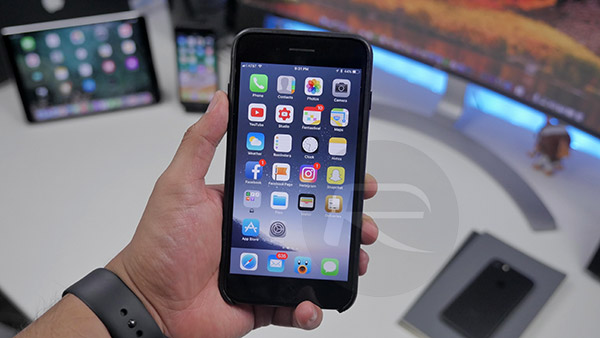Is iOS 11 beta worth downloading / installing or safe to use on your primary iPhone or iPad now? Here’s what we know and think so far.
If you are one of the fortunate developers or public beta testers who have been thoroughly testing iOS 11 for the last six weeks or so then you are likely being asked on an almost daily basis if it’s currently in a good enough position to be running on a main iPhone or iPad. Apple highly recommends that all pre-release firmware of this nature should be installed on a secondary or test device, but with developer beta 5 and public beta 4 out now, we think it’s worth asking whether iOS 11 is in a position where it can be used in a primary device?

As mentioned, at the time of writing, developers on the latest iOS 11 pre-release build are running and interacting with beta 5, with those on the public testing platform having public beta 4 on their devices. As we already know, these two versions are essentially the exact same build and just served to different pool of testers on different dates using multiple development branches. Individual speed tests and benchmarks showcasing the latest build against the initial beta released in June clearly shows that Apple has made tremendous advances over the current testing period, but is it enough to use on daily basis?
On a personal level, I have been running iOS 11 as part of the Apple Beta Software Program on iPhone 7 Plus, which currently has public beta 4 installed. My own experience mimics the attached video below, which clearly shows that steady improvements have been made with each beta release, resulting in an experience which shows increasing levels of stability from an overall system perspective, as well as slightly improved battery performance. However, the latest beta also seems to have taken a few steps back in what I would call non-critical areas.
As an example of this, I have been experiencing a lot of issues with not being able to bring the device out of standby when it is locked, but instead just being faced with an entirely black screen, which results in a force reboot being required. There are also random crashes and reboots here and there when trying to perform certain tasks, such as setting a perspective wallpaper for the Lock screen. Neither of these issues occurs frequently enough or affect critical areas of the system to cause trouble in my opinion, but they are still clear examples of where improvement and additional stability is needed.
Where third-party apps are concerned, I have personally only encountered one app which fails to load at all, and this only recently occurred with the release of public beta 4. The same app worked flawlessly on all pre-release seeds prior to this latest release. Some apps have slight graphical or layout issues but seem to function as intended. The real issue will occur for those who still actively interact with apps which only ship with a 32-bit slice. These apps will simply not work on any version of iOS 11, which means it’s likely an install on a primary device is still currently not recommended until those apps are updated or you find alternatives.
The conclusion? The most recent version of iOS 11 is predominantly extremely stable and offers an experience that wouldn’t be out of place on a primary device. As with any platform in development, there are certain issues and niggles which occur, but nothing in my experience which instantly rules this out apart from the aforementioned 32-bit app issue.
Check out the video below to grasp the speed improvements made in iOS 11 beta 1 through till the latest developer beta 5 release.
You may also like to check out:
- Download Kodi 17.3 On Raspberry Pi 3, 2, 1 Or Zero, Here’s How
- Game Of Thrones S07E05 And Other Scripts Leak Along With Contact Details Of Cast Members
- Download iOS 11 Public Beta 4 And Install The Right Way, Here’s How
- Download iOS 11 Beta 5 IPSW For Your iPhone, iPad, iPod touch [Dev Release]
- Download iOS 11 Public Beta 4 OTA Update For Your Device
- Jailbreak iOS 10.3.3 / 10.3.2 / 10.3.1 / 10.3 For iPhone And iPad [Latest Status Update]
- Download iOS 11 Beta 5 & Install On iPhone 7, 7 Plus, 6s, 6, SE, 5s, iPad, iPod [Tutorial]
You can follow us on Twitter, add us to your circle on Google+ or like our Facebook page to keep yourself updated on all the latest from Microsoft, Google, Apple and the Web.

